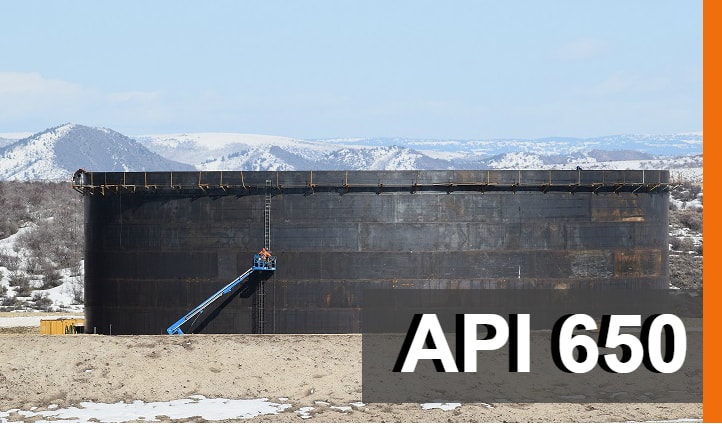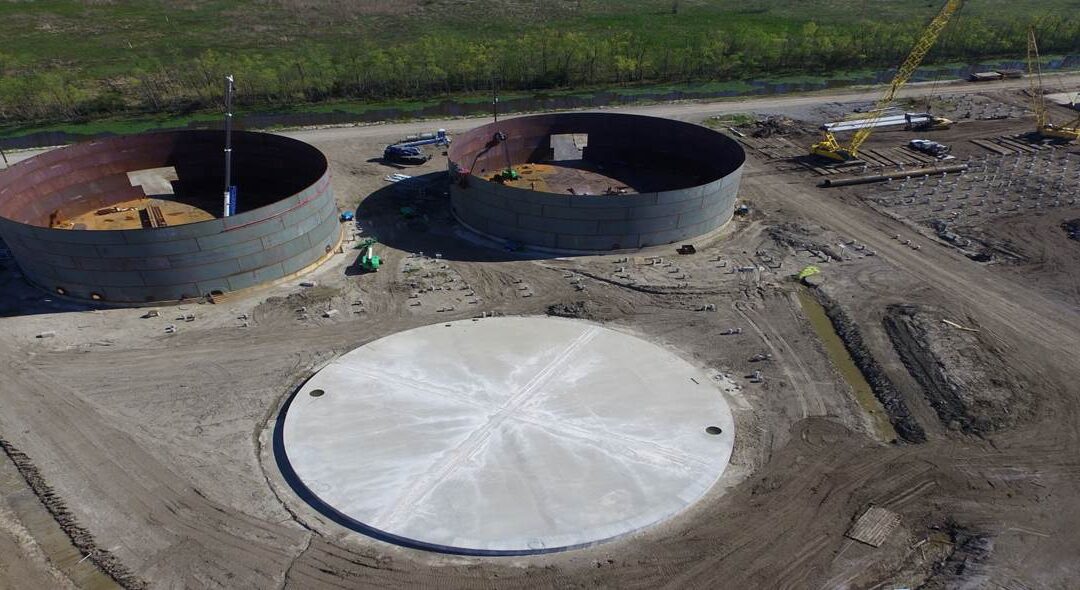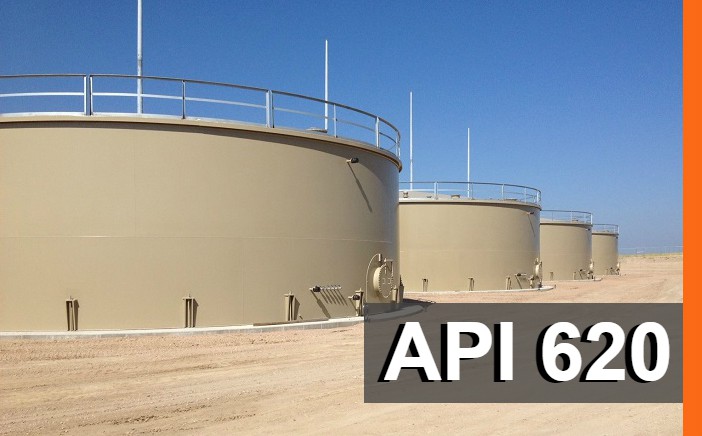How API 650 Welding Inspection Enhances Longevity of Welded Structures
A Step-by-Step Check Out the Installment Process of Welding Evaluation Techniques
Welding inspection is an essential procedure that ensures structural stability and safety and security. The installment of assessment methods includes a number of systematic steps, each indispensable to accomplishing reputable outcomes. From planning and device choice to performing non-destructive and visual tests, each phase demands mindful interest. Recognizing these procedures can greatly enhance top quality assurance in welding jobs. What obstacles arise in applying these techniques, and how can they be properly attended to?
Recognizing the Relevance of Welding Assessment
Welding assessment is an essential component of guaranteeing structural stability and safety in building and construction and manufacturing procedures. This technique involves evaluating welded joints for defects, making sure that they fulfill details standards and regulations. By methodically gauging weld top quality, examiners can recognize issues such as splits, spaces, and insufficient blend, which can compromise the strength and resilience of structures.
The importance of welding evaluation extends past immediate safety worries; it helps avoid costly failings and possible hazards in the long-term. Effective inspection strategies foster compliance with market criteria, thereby boosting the total dependability of welded components. On top of that, a durable examination procedure adds to maintaining the track record of makers and builders, as it guarantees clients of the high quality of their jobs. Ultimately, recognizing the relevance of welding assessment is important for promoting risk-free construction methods and ensuring the longevity of important facilities and items.
Selecting the Right Tools for Examination
When picking the proper tools for inspection, it is vital to consider the specific needs of the welding process and the materials involved. Different examination approaches, such as aesthetic, ultrasonic, and radiographic testing, require distinctive devices customized to their distinct demands. For visual evaluations, tools like magnifying calipers and glasses are essential for reviewing weld top quality. Ultrasonic screening calls for specific devices efficient in transferring and receiving audio waves to identify internal flaws. Radiographic testing, on the other hand, makes use of X-ray or gamma-ray sources together with sensitive movie or digital detectors to disclose inconsistencies.
Furthermore, personal safety equipment (PPE) is vital to guarantee the safety of assessors throughout analyses. Selecting the right devices not just boosts the precision of examinations however likewise adds to the total stability and security of the welding job. A thorough understanding of offered devices and their applications is vital for efficient welding inspection.
Getting ready for the Inspection Refine
Before initiating the examination procedure, it is important to establish a complete strategy that lays out the scope and objectives of the analysis. This plan needs to consist of specific standards that define what comprises acceptable top quality in the welding job being inspected. Determining the pertinent codes and requirements is essential, as they will lead the inspection criteria and approaches.
Additionally, personnel entailed in the examination should be adequately trained and licensed in welding assessment techniques to assure integrity and accuracy. A checklist can be useful in arranging the various aspects of the evaluation, varying from devices readiness to environmental conditions that could influence the evaluation.

Finally, logistical factors to consider such as scheduling, available sources, and interaction between staff member should be attended to. By preparing systematically, examiners can enhance the performance of the examination and make certain that all vital factors are properly considered prior to continuing with the examination itself.
Carrying Out Visual Inspections

Performing visual inspections is a vital action in the welding evaluation procedure, needing careful preparation to guarantee effective analysis. Examiners need to know with crucial defect indications that can signify possible concerns in weld high quality. By concentrating on these facets, one can improve the total dependability of the evaluation results.
Planning For Visual Assessment
Visual assessment functions as an important initial step in the welding assessment process, ensuring that any type of potential issues are determined early (API 650 Welding Inspection). Correct preparation is essential for efficient visual examination. Inspectors should start by evaluating appropriate documentation, including welding procedures and requirements, to understand the project needs. They should collect required tools, such as multiplying glasses, flashlights, and appropriate personal protective tools (PPE) A thorough evaluation of the assessment location is critical; examiners must verify it is tidy and cost-free of obstructions. In addition, it is very important to establish perfect lights problems to improve presence of welds. By taking these primary actions, assessors can produce an atmosphere for identifying discrepancies and assuring the stability of the welded frameworks
Trick Problem Indicators
A comprehensive understanding of essential defect indications is crucial throughout visual assessments to guarantee the top quality and safety and security of welded joints. Examiners ought to concentrate on particular signs such as fractures, porosity, undercuts, and insufficient combination. Fractures may show up as sharp lines and can compromise architectural honesty. Porosity materializes as little openings that can compromise weld stamina. Undercuts, which are grooves along the weld edge, can cause stress focus. Insufficient fusion suggests that the weld see here metal did not properly bond with the base product, causing a weak joint. By methodically determining these problems, inspectors can determine conformity with industry requirements and enhance the general integrity of bonded structures, ultimately contributing to safer operational conditions.
Implementing Non-Destructive Testing Strategies

Numerous non-destructive screening (NDT) strategies are indispensable to ensuring the honesty of bonded frameworks without compromising their functionality. These methods permit examiners to review weld high quality and detect defects without causing damages to the products being evaluated. Usual NDT methods include ultrasonic testing, radiographic screening, magnetic fragment screening, and color penetrant testing. Each approach offers a specific purpose, addressing different sorts of flaws such as splits, porosity, or insufficient fusion.
Carrying out NDT strategies calls for a methodical approach, beginning with choosing the ideal approach based upon the products and the nature of the weld. Training personnel in these methods is important for precise results. In addition, developing clear treatments and standards guarantees consistency throughout the inspection procedure. By incorporating NDT right into the welding evaluation process, organizations can improve the integrity of their products while reducing potential dangers related to structural failings. This proactive method inevitably adds to preserving security and quality standards in bonded constructions.
Examining and documenting Examination Results
Reliable documentation and analysis of examination outcomes are important parts of the welding evaluation process. Precise documents of examination findings function as a referral for quality More Bonuses control and conformity with industry standards. API my blog 650 Welding Inspection. Inspectors should utilize organized forms or digital systems to log information such as the sort of weld, examination methods employed, and any discrepancies identified throughout the assessment
As soon as information is collected, comprehensive analysis is vital. This entails comparing outcomes versus developed standards to recognize trends or reoccuring problems. Analytical tools may be utilized to quantify defects and evaluate their effect on overall weld top quality.
In addition, efficient communication of findings to relevant stakeholders is crucial. Records and summaries need to be concise and clear, highlighting vital understandings and referrals for corrective activities. By systematically documenting and evaluating assessment results, organizations can promote continual renovation in welding methods and boost product stability.
Frequently Asked Concerns
What Credentials Are Needed to Come To Be a Welding Assessor?
To become a welding examiner, one typically requires appropriate qualifications such as AWS CWI, along with experience in welding practices, expertise of welding codes, and efficiency in evaluation techniques to guarantee high quality and safety and security standards.
Exactly How Often Should Welding Inspections Be Performed?
Welding examinations need to be performed routinely, normally after each weld is finished, and regularly throughout projects. Aspects such as project intricacy, market standards, and regulative needs can affect the frequency of these evaluations.
What Is the Cost of Welding Assessment Solutions?
The price of welding inspection services varies considerably based on factors such as project intricacy, size, and location. Normally, prices vary from $100 to $150 per hour, with added fees for specialized testing and accreditations.
Are There Certifications for Welding Inspectors?
Yes, there are different certifications for welding inspectors, including those used by the American Welding Culture (AWS) and the International Institute of Welding (IIW) These certifications ensure examiners have the necessary abilities and understanding for efficient assessments.

How Do I Select an Inspection Solution Supplier?
To pick an assessment company, one should examine credentials, experience, industry online reputation, and client reviews. Furthermore, comparing service offerings and rates can help ensure the selected company satisfies specific project requires efficiently.
In addition, personnel entailed in the assessment has to be adequately trained and accredited in welding inspection methods to ensure integrity and precision. Conducting visual evaluations is a crucial action in the welding evaluation procedure, requiring cautious preparation to guarantee efficient examination. Aesthetic evaluation serves as a vital first action in the welding inspection process, guaranteeing that any type of possible flaws are determined early. Effective documents and analysis of examination outcomes are vital elements of the welding examination procedure. Welding evaluations ought to be performed consistently, typically after each weld is finished, and regularly throughout jobs.